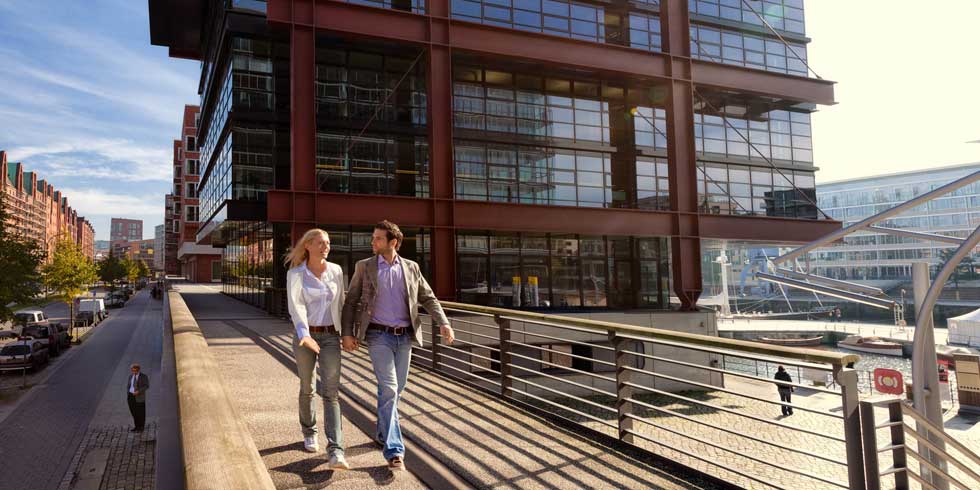How to Survive a Flood
March 1, 2017 | By Shoal Creek Conservancy
This blog post was written by Andy Sobchak. To learn more about the author, please visit this site.
Hamburg is a river city. Built on an estuary of the River Elbe 70 miles inland from the North Sea, its residents have battled to keep river and tidal flooding out of their streets and cellars since the ninth century. In 2000, staring down climate change, the prospect of rising sea levels and increasingly frequent flooding, they gave up and welcomed the water in. The strategy appears to be working.
Hamburg’s 593-acre HafenCity project is redeveloping a low-lying harbor area into a thriving urban neighborhood immune but not impervious to flooding. Billed as Europe’s largest inner-city re-development, the concept had been in incubation since the fall of the Berlin Wall but only received masterplan approval in 2000. At a cost of $13 billion – mainly borne by the private sector – HafenCity is now serving as a model for municipal flood adaptation and resiliency planning.
The historic approach to flood abatement here in Germany’s second largest city was to build walls and dykes. The city has over 60 miles of them protecting the main city. But in HafenCity, dykes around the district’s perimeter were not desired as planners wanted to preserve the island’s river connection and waterfront character. Building flood walls would also have required significant up-front public capital and years to complete, delaying the first developer from punching shovel into ground and the city realizing any return on investment.
The solution was to welcome the flood water into HafenCity and build waterproofed structures which poked out above the anticipated flood elevations. Buildings were constructed on 8- to 9-m plinths made of compacted dirt – “Warften,” in German – with promenade-facing lower levels employing aquarium-grade glass and watertight windows and doors. Flood waters, which usually invaded a couple of times every winter, could course through the development but with damage to health or property kept to a minimum if it occurred at all.
Transportation corridors, including roads, bikeways and walkways, were all built at the same elevation – 8 to 9 meters above sea level and above anticipated flooding elevations. Flood doors were implemented inconspicuously and can be shut quickly to protect retail space located along the promenade close to the water. These features allow the district to keep at the pace of life during times of high water and fully utilize public amenities during normal flow.
Since floodproofing is being incorporated directly into the structures, the total flood mitigation costs for the district are distributed and being born entirely by each building developer, meaning development of HafenCity can proceed at a reasonable rate without the lagging influence of politics or public budget debates.
Today, 17 years after its genesis (and 30 years since its ideation), HafenCity is still under construction. In late 2016, development in the last large un-built quarter got underway with two soon-to-sprout condominium towers and seven seven-story apartment buildings – a total of 500 residential units. This construction dug in just as HafenCity’s Elbphilharmonie – a stunning 2,100-seat concert theater complete with luxury hotel, 50 apartments and a 121-foot-high public plaza – prepared for a January 2017 opening.
An Elbphilharmonie is (likely) not in the plans for Shoal Creek’s flood mitigation strategy but HafenCity’s philosophy can be. Flooding is a natural process. Advancements in architecture, engineering, science and design, as exhibited with the HafenCity project, now afford us the opportunity to be better water managers and build resilient communities. Not only can we ‘live with water’ but we can live well with water.

Photo: HafenCity
With files from Building magazine
The first open house as part of the City of Austin’s Shoal Creek Flood Mitigation Study is Thursday, March 9 at Cirrus Logic (700 West Avenue). To help inspire great discussion, the Shoal Creek Conservancy has created the City + Water showcase, a look at innovative stormwater management and flood mitigation from around the world. Have a read and have your say on what the Shoal Creek of the future should look like.
